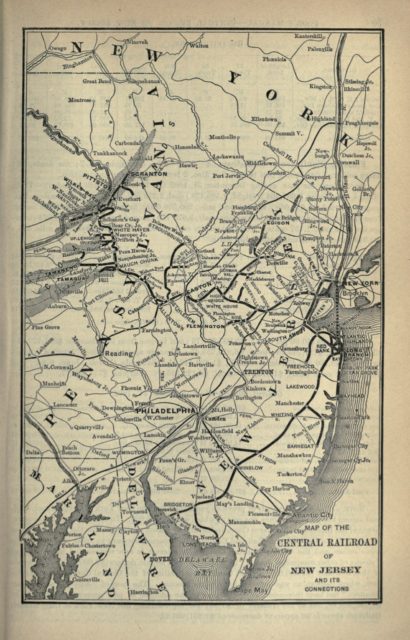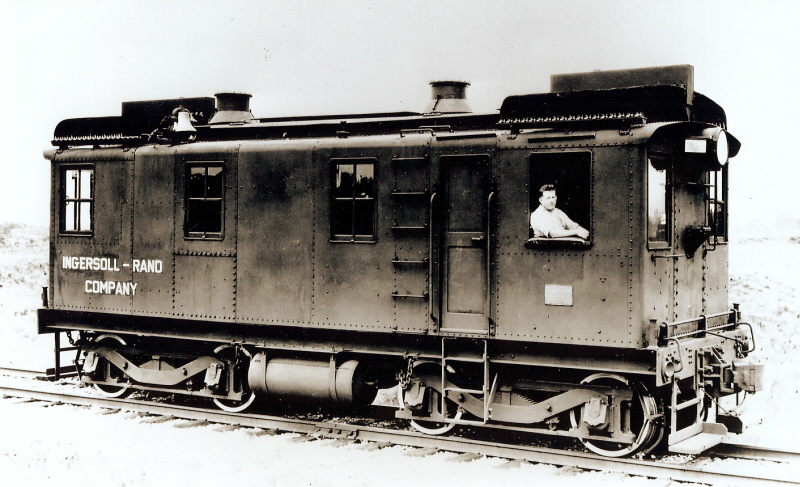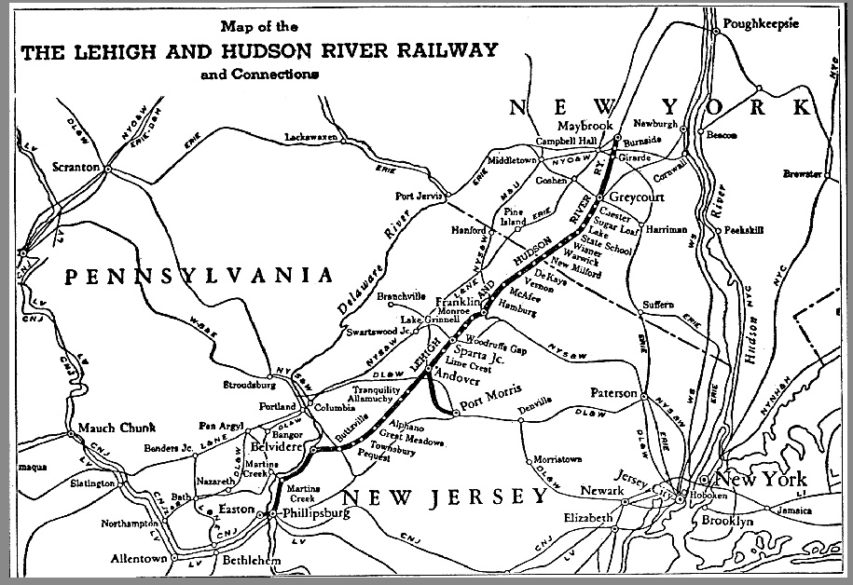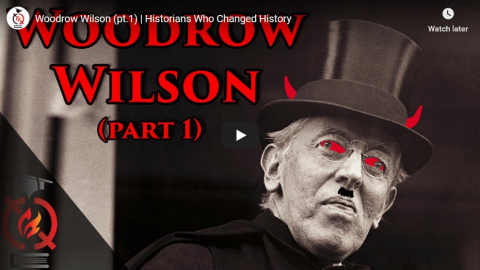Forgotten Weapons
Published Jan 19, 2024Today we’re taking a look at a Smith & Wesson Chiefs Special, but not just any Chiefs Special. This is serial number 29, factory engraved and gifted to Chief Edward Boyko of Passaic New Jersey in 1950. When S&W introduced the new revolver to compete with Colt’s Detective Special, they simply called it the “Model J” (it was the first of the J-frame S&W revolvers). They released it at the 1950 annual conference of the International Association of Chiefs of Police, and ran a contest among to attendees to name the new gun.
Chief Edward Boyko’s suggestion of “Chiefs Special” was (perhaps unsurprisingly, given the audience) voted winner, and S&W gave him a personally engraved example as a prize. He would carry that gun for another 10 years as Passaic Chief of Police before retiring in 1960.
The Chiefs Special was essentially a slightly scaled-up I-frame revolver, strengthened to handle the .38 Special cartridge instead of the previous .38 S&W option. This extremely early example has a number of features not present on standard production guns, including the small trigger guard, large cylinder release latch, and semi-circular front sight.
(more…)
April 23, 2024
The 1950 Marketing Contest to Name the S&W Chiefs Special
March 1, 2024
Women behaving badly on [police bodycam] video
Janice Fiamengo suggests that demands to the use of police bodycam footage involving young women being arrested for criminal behaviour is a weird bit of official white-knighting on the part of the authorities:
Moments of public outrage can be opportunities to consider deep-rooted cultural assumptions.
There’s been moral outrage lately over a popular YouTube channel called Drive Thru Tours. Launched in 2020, the channel started out by posting videos of tours through parts of New Jersey and New York. It hit paydirt last year when it began showing videos of police arrests, with titles such as “Rude 19-year-old Girl Arrested for DUI in Pullman, WA” (recommended if you want to get a flavor of the site) and “Belligerent Woman Arrested for DWI after Police Pursuit and Taken to Jail” (not recommended — very disturbing). The channel owner obtained the content — which until recently has focused exclusively on female offenders — from police bodycam recordings, now publicly available through freedom of information requests.
Bodycam footage was originally made accessible to the public so that American citizens can hold police accountable for their actions. Scrutiny of police behavior is widely considered a public good. Scrutiny of female behavior, however, is quite a different story — as responses to the channel demonstrate.
According to a small flurry of recent news reports, New Jersey police are warning that Drive Thru Tours is harming “vulnerable” young women by posting the evidence of their arrests. The bodycam footage was never intended, they protest, for such a purpose. In consequence, the Association of Chiefs of Police of New Jersey is calling for legislation against what they are describing as “online sexual predators“, and lawmakers in that state are considering a bill that would prohibit publishing the footage except within narrow parameters, including with the written consent of the subject.
Quite apart from whether such a bill is a good idea or not (I favor public access but have not given the matter serious thought), the language used in the articles is remarkable for its gynocentric sentimentality and misplaced sympathy.
One of the most vocal on the subject is Montville, New Jersey Police Chief Andrew Caggiano, who is quoted as stating that “It was never the intent of OPRA [the Open Public Records Act] to create such a platform that preys on young women and takes advantage of them at a time when they are vulnerable”. He also expressed a personal repugnance: “As a law enforcement professional and the father of three daughters, I am sickened by the fact that people are abusing OPRA to post these types of videos on social media sites”.
Given that it is not (yet) illegal to use bodycam material in the manner described, Chief Caggiano’s dramatic reaction seems overstated. One wonders in what sense the reckless and self-absorbed young people shown in these videos are “vulnerable”. Wouldn’t such language be better suited to their victims? Perhaps Caggiano knows something about his daughters that we don’t know (there is a video in which a “Cop’s Daughter Gets Arrested for DWI after Fleeing Accident Scene”): one would not normally expect a chief of police to so quickly substitute in imagination his own daughters for the inebriated and flagrantly dishonest women shown on Drive Thru Tours.
Caggiano’s bluster is, of course, all too familiar in a culture that cannot bear to hold women fully responsible for their bad actions — no matter how anti-social or potentially lethal — and must habitually frame them as innocent victims. It’s impossible to imagine such outraged sympathy being expressed for any male offenders in similar situations.
August 29, 2023
The noble reasons New Jersey banned self-service gas stations
Of course, by “noble reasons” I mean “corrupt crony capitalist reasons“:
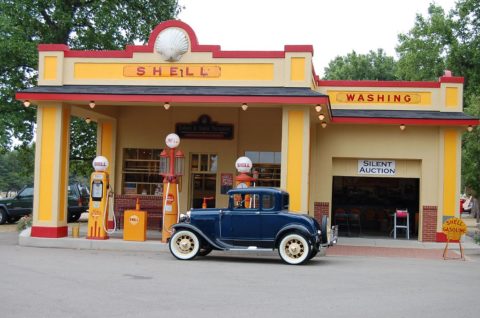
“Model A Ford in front of Gilmore’s historic Shell gas station” by Corvair Owner is licensed under CC BY-SA 2.0
New Jersey’s law, like Oregon’s, ostensibly stemmed from safety concerns. In 1949, the state passed the Retail Gasoline Dispensing Safety Act and Regulations, a law that was updated in 2016, which cited “fire hazards directly associated with dispensing fuel” as justification for its ban.
If the idea that Americans and filling stations would be bursting into flames without state officials protecting us from pumping gas sounds silly to you, it should. In fact, safety was not the actual reason for New Jersey’s ban (any more than Oregon’s ban was, though the state cited “increased risk of crime and the increased risk of personal injury resulting from slipping on slick surfaces” as justification).
To understand the actual reason states banned filling stations, look to the life of Irving Reingold (1921-2017), a maverick entrepreneur and workaholic who liked to fly his collection of vintage World War II planes in his spare time. Reingold created a gasoline crisis in the Garden State, in the words of New Jersey writer Paul Mulshine, “by doing something gas station owners hated: He lowered prices”.
In the late 1940s, gasoline was selling for about 22 cents a gallon in New Jersey. Reingold figured out a way to undercut the local gasoline station owners who had entered into a “gentlemen’s agreement” to maintain the current price. He’d allow customers to pump gas themselves.
“Reingold decided to offer the consumer a choice by opening up a 24-pump gas station on Route 17 in Hackensack,” writes Mulshine. “He offered gas at 18.9 cents a gallon. The only requirement was that drivers pump it themselves. They didn’t mind. They lined up for blocks.”
Consumers loved this bit of creative destruction introduced by Reingold. His competition was less thrilled. They decided to stop him — by shooting up his gas station. Reingold responded by installing bulletproof glass.
“So the retailers looked for a softer target — the Statehouse,” Mulshine writes. “The Gasoline Retailers Association prevailed upon its pals in the Legislature to push through a bill banning self-serve gas. The pretext was safety …”
The true purpose of New Jersey’s law had nothing to do with safety or “the common good”. It was old-fashioned cronyism, protectionism via the age-old bootleggers and Baptists grift.
Politicians helped the Gasoline Retailers Association drive Reingold out of business. He and consumers are the losers of the story, yet it remains a wonderful case study in public choice theory economics.
The economist James M. Buchanan received a Nobel Prize for his pioneering work that demonstrated a simple idea: Public officials tend to arrive at decisions based on self-interest and incentives, just like everyone else.
June 4, 2021
Fallen Flag — the Central Railroad of New Jersey
 This month’s Classic Trains fallen flag feature is the Central Railroad of New Jersey (CNJ) by Peter Brill. The first of the two original lines that merged to become the CNJ was granted a charter as the Elizabethtown and Somerville Railroad to create a connection from Elizabeth, New Jersey to Somerville, including a ferry into New York City. The charter was dated 9 February, 1831 and the line was completed in 1842. The Somerville and Easton received a charter in 1847 to connect the existing Elizabethtown line to Easton, Pennsylvania and the new connecting line was leased by the Elizabethtown and Somerville in 1848 and then purchased outright in 1849. The combined railroads merged as the Central Railroad of New Jersey in February of that year.
This month’s Classic Trains fallen flag feature is the Central Railroad of New Jersey (CNJ) by Peter Brill. The first of the two original lines that merged to become the CNJ was granted a charter as the Elizabethtown and Somerville Railroad to create a connection from Elizabeth, New Jersey to Somerville, including a ferry into New York City. The charter was dated 9 February, 1831 and the line was completed in 1842. The Somerville and Easton received a charter in 1847 to connect the existing Elizabethtown line to Easton, Pennsylvania and the new connecting line was leased by the Elizabethtown and Somerville in 1848 and then purchased outright in 1849. The combined railroads merged as the Central Railroad of New Jersey in February of that year.
Map of the extent and connections of the Centrail Railroad of New Jersey in 1893.
Poor’s Manual of the Railroads of the United States via Wikimedia Commons.
Click to see full-size image.At its peak, the Central Railroad of New Jersey, the self-proclaimed “Big Little Railroad”, operated only about 700 route-miles, but in keeping with its densely populated region, totaled over 1,900 miles of track, two-thirds in New Jersey. CNJ’s Central Division extended from Jersey City to Phillipsburg, on the Delaware River. The Lehigh & Susquehanna Division (later Central Railroad of Pennsylvania, then the Penn Division) went west from Easton, Pa., to Allentown, then north to Wilkes-Barre and Scranton. The Southern Division, from Red Bank to Bridgeton/Bayside, was reached from Elizabethport via CNJ’s Perth Amboy Branch and the New York & Long Branch.
Although “little” in geographic span — it’s just 191 miles from Jersey City to Scranton — CNJ was “big” in traffic density. Between Jersey City and Raritan, 35 miles of commuter territory, four to six main tracks handled 300 daily commuter trains carrying 35,000 riders plus local freights, longer-distance passenger and freight trains, and, east of Bound Brook Junction, through Baltimore & Ohio/Reading traffic from Philadelphia and beyond.
[…]
CNJ’s evolution from tidewater connection to competing anthracite road coincided with LV [Lehigh Valley] and DL&W [Delaware, Lackawanna & Western] developing their own routes to New York Harbor. CNJ originally based its Pennsylvania operations in Mauch Chunk (now called Jim Thorpe). Narrow-gauge “lokies” worked the Wanamie Colliery on the Nanticoke Branch until 1967, and CNJ hauled the anthracite to Ashley’s Huber Breaker. In 1892, Central States Dispatch, a fast freight route on B&O, Western Maryland, RDG [Reading], CNJ, Lehigh & Hudson River, and New Haven, commenced via Allentown Yard.
In 1893, America’s first automatic, motor-operated semaphore signal was installed on CNJ at Black Dan’s Cut east of Phillipsburg. Installation of twin McMyler car dumpers at Pier 18 in Jersey City in 1919 created CNJ’s foremost destination for anthracite and bituminous coal into the 1960s. In 1925, what is regarded as America’s first successful commercial diesel locomotive, CNJ 1000, a 300 h.p. box-cab, began a 27-year assignment at Bronx Terminal. The bridge over Newark Bay was replaced in 1926 by a 1.4-mile, 4-track, 2-span, lift-type drawbridge. In the 1930s, one of the country’s most modern traffic control towers was installed at Elizabethport to control the convergence of the multi-track Central Division main with the Newark and Perth Amboy branches. E’port also hosted CNJ’s main shops.
Two Blue Comet consists, Packard blue with gold lettering and window bands of Jersey cream, in 1929 introduced luxury coach service at no extra charge between Jersey City and Atlantic City. Later that year, The Bullet debuted similar service between Jersey City and Wilkes-Barre. Specially painted Pacifics handled both: royal and Packard blue with gold striping and lettering for the Comet and dark olive with gold striping and chromium trim for The Bullet. The latter ran only two years, but the Comet lasted until 1941.
CNJ entered a 10-year bankruptcy in 1939 while controlled by the Reading, which in turn was controlled by B&O. During World War II, the German submarine menace diverted eastbound oil products from tanker to tank car, and CNJ delivered up to 1,000 loads a day, half the New York area’s requirement, until pipelines were built. In 1944 CNJ became “Jersey Central Lines” and adopted the Statue of Liberty emblem.
August 6, 2020
Fallen flag — The Lehigh and Hudson River Railway
 This month’s Classic Trains featured fallen flag is a northeastern railway I didn’t know much about, the Lehigh and Hudson River. If you asked me to complete the phrase “Lehigh and …”, I’d most likely have said “New England”, which was a larger operation but is perhaps only remembered now as the second major American railway to file for abandonment after the New York, Ontario & Western. The L&HR earned its keep primarily as a bridge line, with additional revenues from online anthracite coal mines. From the original founding in 1881, it operated until it was incorporated into Conrail in 1976.
This month’s Classic Trains featured fallen flag is a northeastern railway I didn’t know much about, the Lehigh and Hudson River. If you asked me to complete the phrase “Lehigh and …”, I’d most likely have said “New England”, which was a larger operation but is perhaps only remembered now as the second major American railway to file for abandonment after the New York, Ontario & Western. The L&HR earned its keep primarily as a bridge line, with additional revenues from online anthracite coal mines. From the original founding in 1881, it operated until it was incorporated into Conrail in 1976.
L&HR’s origins date to 1860, when arrival of the New York & Erie Railroad, at Greycourt, New York, 10 miles north of Warwick, prompted construction of the Warwick Valley Railroad under the leadership of Grinnell Burt. The Warwick Valley operated as a 6-foot-gauge feeder to the same-gauge NY&E, using the big road’s equipment for two decades. Around 1880, WV assumed its own operations, was standard-gauged, and built the 11-mile Wawayanda Railroad, which tapped agricultural and mineral sources at McAfee, New Jersey. Further extension southward soon followed.
Two projected competitive lines were combined as the Lehigh & Hudson River Railroad, extending from a Pennsylvania Railroad connection at Belvidere, New Jersey, on the Delaware River, to Hamburg, New Jersey, where three miles of isolated Sussex Railroad track linked it to the Warwick Valley. In 1882 the extensions were folded into the 61-mile Lehigh & Hudson River Railway.
In addition to the New York & Erie’s mainline business at Greycourt, its Newburgh Branch provided access to Hudson River carferries crossing to the New York & New England’s Fishkill Landing. Anthracite coal, particularly from mines of affiliate Lehigh Coal & Navigation, was a major eastbound commodity. Anticipating completion of the Poughkeepsie Bridge a few miles upstream, the Orange County Railroad built north of Greycourt to connect with the New York, Ontario & Western at Burnside in 1890. Via trackage rights, this provided a first connection with the Central New England & Western at Campbell Hall, New York. Within a year, the Orange County was extended from Burnside to CNE’s new Maybrook yard.
Simultaneously, trackage rights were obtained from the Pennsy over 13 miles of its Belvidere-Delaware Division (“Bel-Del”) to Phillipsburg, New Jersey. There, disconnected subsidiaries undertook bridging the Delaware to access Easton, Pennsylvania, and the Jersey Central and Lehigh Valley. The bridge also opened in 1890, creating a three-state route of about 85 miles. The L&HR thus fulfilled the prescient vision of the line’s 1861 directors, who reported, “It was well understood by those … promoting the construction of the Warwick Valley Railroad, that in all probability it would be but a link in a great chain destined to be one of the most important thoroughfares, and to effect an important influence upon the commerce and manufacturers of an extensive section of our country …” Additional links soon extended the chain of this “important thoroughfare.”
March 28, 2020
Woodrow Wilson (pt.1) | Historians Who Changed History
The Cynical Historian
Published 28 Dec 2017Time to finally tell you why I’ve used Woodrow Wilson as a bit of a rhetorical punching bag. This is part 1 of a 2 part series. This part will cover his life and scholarship before the presidency. It’s going to be quite a trip. [References on YouTube description]
————————————————————
Support the channel through Patreon:
https://www.patreon.com/CynicalHistorianLET’S CONNECT:
https://twitter.com/Cynical_History
————————————————————
Wiki:
Thomas Woodrow Wilson (December 28, 1856 – February 3, 1924) was an American statesman and academic who served as the 28th President of the United States from 1913 to 1921. A member of the Democratic Party, Wilson served as the President of Princeton University from 1902 to 1910 and then ran and was elected as a progressive Democrat to the office of Governor of New Jersey. Wilson’s victory in the 1912 presidential election made him the first Southerner elected to the presidency since Zachary Taylor in 1848. He also led the United States during World War I, establishing an activist foreign policy known as “Wilsonianism.” He was a major leader at the Paris [Versailles] Peace Conference in 1919, where he championed the proposed League of Nations. However, he was unable to obtain Senate approval for U.S. membership. After he suffered debilitating strokes in September 1919, his wife and staff members handled most of his presidential duties.
————————————————————
Hashtags: #History #WoodrowWilson #LostCause #historians #Princeton #biography
August 11, 2015
The range and striking power of the Card and Krueger study
At Coyote Blog, Warren Meyer explains how one particular economic study wields far more influence in the fast food/minimum wage debate than any other similar study:
Pick a progressive on the street, and in the unlikely event they can name any economic study, that study will probably be Card and Krueger’s study of the effect of a minimum wage increase in New Jersey. Sixty bazillion studies have confirmed what most of us know in our bones to be true, that raising the price of labor decreases demand for that labor. Card and Krueger said it did not — and that a minimum wage increase may have even increased demand for labor — which pretty much has made it the economic bible of the Progressive Left.
What intrigues me is that Card and Krueger specifically looked at the effect of the minimum wage on large chain fast food stores. In this study (I will explain the likely reason in a moment) they found that when the minimum wage increased for all businesses in New Jersey, the employment at large chain fast food restaurants went up.
So I wonder if the Progressives making this ruling in New York thought to themselves — “we want to raise the minimum wage. Well, the one place where we KNOW it will have no negative effect from Card and Krueger is on large fast food chains, so…”
By the way, there are a lot of critiques of Card & Krueger’s study. The most powerful in my mind is that when a minimum wage is raised, often the largest volume and highest productivity companies in any given business will absorb it the best. One explanation of the Card & Krueger result is that the minimum wage slammed employment in small ma and pa restaurants, driving business to the larger volume restaurants and chains. As a whole, in this theory, the industry saw a net loss in employment and a shift in employment from smaller to larger firms. By measuring only the effect on larger firms, Card and Krueger completely missed what was going on.
December 29, 2014
Reason.tv Nanny of the Year for 2014
Published on 29 Dec 2014
Our nation’s control freaks got even freakier in 2014 – from jetpacks to parking apps, eco-ATMs and powdered alcohol, they were determined to kill anything cutting edge.
They targeted everything from dogs in parks to births at home, and they’ll sic cops on you for hoarding or smelling bad. You might even get busted for doing things that are legal–like vaping while driving, warning motorists about speed traps, or putting up Christmas lights.
And whether it’s yanking chocolate milk, boogie boards, homemade libraries or sunscreen(?!), the control freaks are (all together now!): Doing it for the children.
It’s fitting, then, that 2014’s Nanny of the Year recipients justified their power grab on the same grounds (although the real reason may have more to do with protecting city officials from future caught-on-tape embarrassments).
Check out how one cop’s rant (“Obama has decimated the friggin’ Constitution”) embarrassed a city council into taking home this year’s top dishonors!
February 22, 2014
Christie watch ongoing
The greatest crisis facing the American people today is apparently the nefarious doings of New Jersey Governor Chris “Bridgegate” Christie. If you, like all right-thinking Americans want to know where Christie is and what he’s up to at any given moment, there’s a website you need to follow:
Carla is bemused by my obsession with the New Jersey Governor Christie Christie Bridgegate scandal. I can’t really explain it myself, other than to say it is interesting to watch public servants who can’t keep their psychopathy under control and shut down the world’s busiest bridge traffic out of spite. (I’m not saying Christie shut the traffic down, I’m saying the bad apples he surrounded himself did).
Until now, I’ve had to keep myself satisfied with Rachel Maddow’s excellent, unrelenting, obsessive coverage of the scandal on her nightly show, but now I can get mini-fixes throughout the day, thanks to The Christie Tracker, a website created by Matt Katz of WNYC. I’m so excited!
I’m sure there must be dedicated fans of Rob Ford’s antics who are already trying to put together a similar tracking website for Toronto’s newsworthy mayor…
January 13, 2014
Chris Christie discovers that there are no allies in politics
L. Neil Smith thinks that the national media have abandoned New Jersey governor Chris Christie as the political equivalent of the Washington Generals (that is, the preferred token Republican to lose against the presumptive Democratic presidential candidate):
By now, I’m confident you’ve all heard, seen, or smelled the story about New Jersey’s RINO Governor Chris Christie, whose administration allegedly closed down several lanes on the George Washington Bridge as political retribution of some kind against Fort Lee’s Mayor Mark Sokolich.
“RINO” stands for “Republican In Name Only”. Before the bridge incident, Rush Limbaugh was predicting that Christie would go over to the Democrats day after tomorrow. Now I doubt they’d let him in the clubhouse.
[…]
Of all Christie’s dubious accomplishments, and they are many, the one he’s most proud of and famous for is his moderation. In practice, this means that he has absolutely no discernable philosophy. Those are his principles, by God, and if you don’t like them … he’ll change them. Which enables him, he would tell you, to reach out to the “other side of the aisle”, and make compromises with them, so stuff can get done.
Even when it shouldn’t.
Now you would think, when their moderate Republican buddy came under attack, that some of these Democrats he’s been reaching out to all these years might have something to say in his defense: “Let’s give him the benefit of the doubt,” or something. But listen to the crickets.
Instead, they’re already calling for a Congressional investigation which, translated into Russian and translated back again, means “show trial”.
Also, there are other Republican moderates who share whatever serves Christie for values. You might expect them to stand up with him.
Nope … more crickets.
Finally, there are the media (plural noun again) who have been pimping Christie for so long, not only as an ideal politician, but the very fellow who ought to get the Grand Old Party’s next available nomination for President. They were the first to start snapping at his heels. They never really wanted him as President, They wanted him to be a losing Republican candidate for President, the GOP equivalent of Hubert Humphrey, George McGovern, Walter Mondale, and Michael Dukakis.
But now he’s no longer useful to them, even for that.
January 11, 2014
July 26, 2013
Chris Christie goes full neocon – “You went full retard, man. Never go full retard.”
Conor Friedersdorf on Chris Christie’s embrace of all things neocon:
Before today, I expected that New Jersey Governor Chris Christie would position himself as a national security state moderate in the 2016 Republican primary, acknowledging that the Rand Paul wing of the party has legitimate concerns, picking a couple fights with the GOP’s John Bolton wing, and making it clear to establishment types that he wouldn’t radically challenge the status quo. That would be smart politics.
There are a lot of Republicans who think Rand Paul makes some good points, but aren’t yet ready to embrace his whole critique of the national security state. Who else is going after those votes? But now it seems clear that Gov. Christie will adopt the neoconservative line on national security, embracing the most radical actions of both George W. Bush and Barack Obama.
Speaking at The Aspen Institute, Christie belittled the libertarian wing of his party for its take on NSA spying. “As a former prosecutor who was appointed by President George W. Bush on Sept. 10, 2001, I just want us to be really cautious, because this strain of libertarianism that’s going through both parties right now and making big headlines, I think, is a very dangerous thought,” he said.
Aaron Blake of the Washington Post offers an account of what came next:
Asked whether he includes Paul — a fellow potential 2016 presidential candidate — in his criticism, Christie didn’t back down. “You can name any one of them that’s engaged in this,” he said. “I want them to come to New Jersey and sit across from the widows and the orphans and have that conversation. … I’m very nervous about the direction this is moving in.” Christie acknowledged that there will always be mistakes when it comes to national security and protecting privacy, but said Americans need to stay focused on what’s at stake.
He dismissed some of the current privacy/national security debates as “esoteric.”
“I think what we as a country have to decide is: Do we have amnesia? Because I don’t,” he said. “And I remember what we felt like on Sept. 12, 2001.” Christie also praised the national security strategies of both President Obama and George W. Bush. “I want to say that I think both the way President Bush conducted himself and the way President Obama has conducted himself in the main on those types of decisions hasn’t been different because they were right and because we haven’t had another one of those attacks that cost thousands and thousands of lives,” Christie said.
Personally, I’d strongly prefer to leave the widows and orphans of all atrocities out of politics, because it is so unseemly when politicians opportunistically exploit them to compensate for the power their positions lack on the merits. But if a demagogue forced me to argue in front of them?
November 2, 2012
Modern inventory control and Hurricane Sandy
Unlike major disasters of the past, storm-hit New Jersey and New York City won’t have to face the crippling shortages of food and other essentials in the wake of Hurricane Sandy. The just-in-time food supply chain is proving its versatility yet again:
The day Hurricane Sandy made landfall, the Jersey City, New Jersey, warehouse for food distribution giant Sysco Corp. (SYY) sent out 30,000 cases of food and drinks. Most of the shipments were headed across the Hudson to New York City. On Tuesday, the day after the storm ravaged the city, the warehouse sent out none.
Yet while news of flooding, power outages, downed trees, and other storm-inflicted wreckage abounds, you won’t hear stories of mass starvation in the streets. Food may not be moving in or out of the city, but the data-driven supply chains perfected by some of the world’s biggest companies in the pursuit of profits have become so resilient that even a cataclysm like Sandy registers as little more than a logistical hiccup. While the subways have stopped indefinitely, few in the storm’s path will have to deal with empty shelves for long, if at all.
[. . .]
Wilson says the key adjustment Sysco made ahead of Sandy was to shift shipments to mainly non-perishable goods to ensure customers would have food to last through power outages. The company also prioritized getting orders to institutions that would have to keep large numbers of people fed through the storm, such as hospitals, hotels, airports, shelters, jails, and college campuses. Restaurants will stay near the bottom of the list as the recovery proceeds. But Wilson says the process of getting back to normal won’t drag out. “It’ll be a week or so of business-not-as-usual. But we’ll get back to business-as-usual eventually.”
Large companies like Sysco with nationwide reach and a long history of managing supply chains can adapt quickly to natural disasters because they’ve been there before, and they have the data to show for it. Over the years, as real-time inventory tracking and analysis has become the norm, companies know what people buy before and after disasters. They know how demand has varied between a Gulf Coast hurricane and a New England blizzard. By cross-referencing that granular data with the latest weather predictions, companies can forecast changes in their supply chain needs in parallel with coming storms.
H/T to Charles Stross for the link.
February 29, 2012
NY Police domestic spy operation in Muslim neighbourhoods gets little press attention
Natalie Rothschild on the rather disturbing use of NYPD resources to conduct surveillance operations in Muslim areas of New York City and New Jersey:
It has emerged that the White House has funded the New York Police Department’s surveillance of entire Muslim neighbourhoods with money earmarked for fighting drug crime. The revelations were detailed in reports by the Associated Press this week. In response, senior law enforcement officials and politicians have been either unapologetic or silent. Most tellingly, the Obama administration, which has championed Muslim outreach and has said law enforcement should not put entire communities under suspicion, said on Monday that it has no opinion on the matter.
Since the 9/11 attacks, the Bush and Obama administrations have provided $135million to the New York and New Jersey region through the High Intensity Drug Trafficking Area programme (HIDTA). It’s unclear exactly how much of that money was spent on surveillance of Muslims because the programme has little oversight. But the AP discovered that the White House money has paid for cars that plainclothes NYPD officers used to conduct surveillance of Muslim neighbourhoods in New York and New Jersey, and for computers that stored information about Muslim college students, mosque sermons and social events. It also helps pay rent for the NYPD’s intelligence unit.
This is, effectively, a spying programme used to monitor American Muslims as they shop, work, socialise, pray and study. Police have photographed and mapped mosques and recorded license plates of worshippers. They have compiled lists of Muslims who took new, Americanised names, eavesdropped on conversations inside businesses owned or frequented by Muslims, infiltrated Muslim student groups and monitored websites of universities across north-east US. In the name of counterterrorism, Muslim American citizens have been catalogued, their private conversations and everyday activities recorded and stored in databases.
[. . .]
On Monday, White House spokesman Jay Carney said the administration has no opinion on how the HIDTA grant money was spent and that the White House has no authority to direct, manage or supervise any law-enforcement operations. If the administration truly has no power to influence a NYPD programme used for intrusive monitoring of scores of American citizens, then that would indicate great political impotence. After all, both in the domestic and international arenas, the Obama administration has warned against demonising and singling out Muslims in America and turned Muslim outreach into a priority. Well, it is hard to think of any starker way of ‘singling out’ a group than by stalking anyone who looks or sounds like they belong to it.
September 20, 2010
“I can do whatever I want”
H/T to LibertyIdeals for the link.


